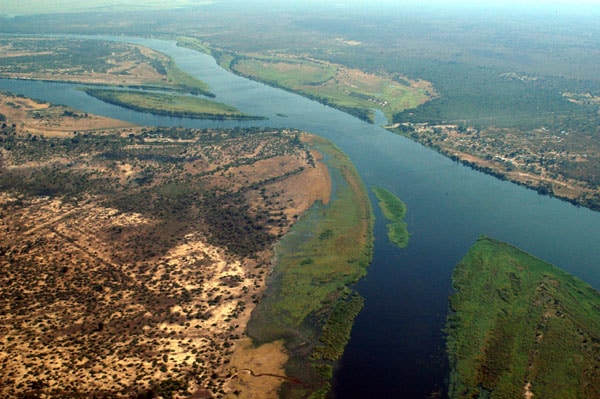Illegal small-scale mining for minerals is a continuing threat to national parks in Zambia in Southern Africa. A proposed open-pit copper mine to be located in the middle of the Lower Zambezi National Park threatens the crucial Zambezi river basin and the livelihoods of 47 million people.
—
In May 2021, Zambia Environmental Management Agency (ZEMA) approved the controversial large-scale open pit mine project located inside the Lower Zambezi National Park.
The Zambezi basin, whose main flow is the Zambezi river, is one of Africa’s most important river basins. It’s a natural asset shared between Angola, Botswana, Tanzania, Namibia, Zambia, Zimbabwe, Malawi and Mozambique directly supporting the livelihoods of over 47 million people. It is also the main supplier of fresh water for households, agriculture, health and industrial use, and supplier of electricity and fish to the populations of these countries. This river basin is a network of important ecosystems that is home to Africa’s most important wildlife and water tourism destinations.
Considering its significance in the economic, environmental and social development of Southern Africa, sustainable management of this water resource is crucial in securing the futures of over 250 million people in the region that depend on it. Yet it is currently faced with various serious threats, one of which is the proposed Kangaluwi copper mining project in Lower Zambezi by Mwembeshi Resources Limited. The proposed site for the mine lies inside the Lower Zambezi National Park (LZNP), an International Conservation Union (IUCN) category II protected area in South-Eastern Zambia, on the Zambezi River. The LZNP provides refuge to globally threatened wildlife species such as elephants and wild Dogs and is home to unique vegetation types that include Zambezi endemics and the only protected and intact lowland deciduous thickets in the Southern African region.
Should the mine move forward as planned, it poses a severe threat to the communities within the region as well as downstream where the risk of contaminating water is extremely high. This would impact the communities in Zambia, Zimbabwe and Mozambique, and the whole Zambezi delta, potentially destroying farming and fishing livelihoods and one of the largest tourism destinations for Zambia and Zimbabwe.
You might also like: How Rare-Earth Mining Has Devastated China’s Environment
The potential long-term impacts of this mine and the environmental threat it poses to the renewable resources of the Zambezi River ecosystem far outweigh any short-term benefits. Local communities depend on the area’s renewable resources for water, fishing, agriculture, tourism and forestry. River pollution caused by the mine could threaten the mighty Zambezi river’s 2,000-ton subsistence fishery, which provides food and protein security to 20,000 people along the river’s banks.
In the LZNP, ecotourism in the area depends largely on the renewable wildlife and habitat resources and contributes significantly to the local and national economies around the LZNP. The tourism establishments in the park employ more than 1,000 local people, generating a local wage bill of $4 million annually that indirectly supports thousands more people at a local community level.
The mine also threatens upcoming conservation projects such as the $12.5 million Lower Zambezi Flagship Species Restoration project. The project aims to bring back locally extinct species such as the Black Rhino and Eland, thereby restoring biodiversity and improving ecosystem processes in the area.
Conservation Lower Zambezi (CLZ), a non-profit organisation committed to the protection of wildlife and to the sustainable use of natural resources in the Lower Zambezi in Zambia, in collaboration with WWF and Wildlife Crime Protection among others, have launched a campaign Save Zambezi, Safe Zambezi to try and stop the proposed mine from going forward.
Though the petition has already reached over 20,000 signatures, CLZ hopes to receive as many signatures as possible to put pressure on the Zambian government to reconsider and revoke the permission to mine the Lower Zambezi.
Featured image by: Brian McMorrow


















